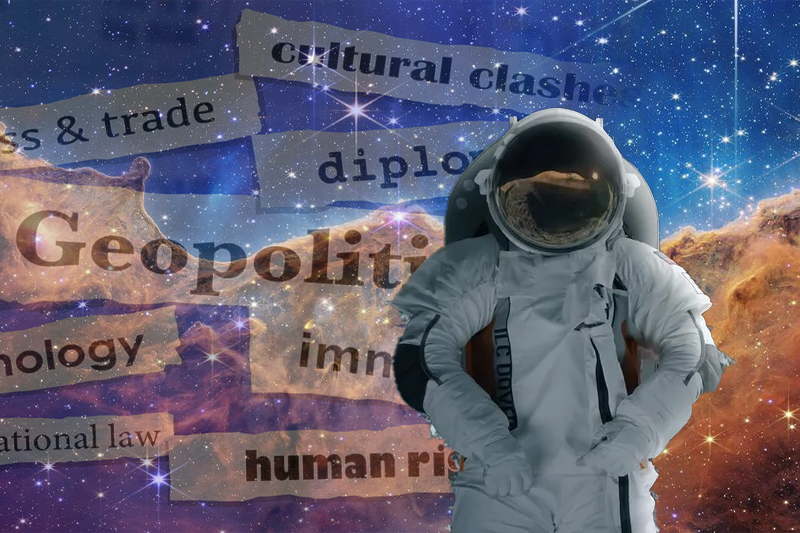
Review: The Last Geopolitical Frontier Is Space
Whether it is Elon Musk’s SpaceX launching reusable rockets to place thousands of Starlink satellites into orbit or the emerging competition for resources on the Moon that pits the United States and China against one another, space exploration and satellite technologies are back in the news in a way not seen since the late 1960s.In addition to these major players, many smaller nations are now also active in space, with the United Arab Emirates and Estonia sending rovers to the moon’s surface, for example.
When he concentrates on geopolitical and astropolitics issues, Marshall is at his best……
The most recent book on geopolitics by journalist and author Tim Marshall serves as an excellent, if unfinished, the primer for those unfamiliar with this renewed race to exploit space and its geopolitical ramifications. I have eagerly anticipated this book as a scholar-practitioner in space policy, and the wait has largely been worthwhile.
When he concentrates on geopolitical and astropolitics issues, Marshall is at his best. The author correctly notes that the current international legal systems, which are based on the 1967 Outer Space Treaty, cannot keep up with the influx of new actors into space as well as the growing commercialization of space.
Marshall also has a point when he discusses the perils of space warfare, such as the massive amount of space debris that “will continue to pose a danger to crucial satellite networks and space stations, as well as to human life,” which would make the area unusable for generations. The author provides much-needed insight into the complexities of lunar exploration by describing the contentious governance debate over how activities on the Moon should be regulated, if at all.
Decreased launch costs
His explanations of the connections between Earthbound geopolitics and activities in orbit and beyond are also helpful.
For example, he discusses how location is crucial in choosing launch sites for satellites, the Sino-US competition for lunar resources like helium-3, which will be needed for fusion reactors in the future, and the Moon’s south pole, which has abundant ice water that can be converted into oxygen and fuel.
Marshall curiously leaves out the reasons why the space domain has become much more accessible to so many nations – over 80, including those in Africa, the Middle East, and Asia – and why many policy and business analysts are now urging businesses to create corporate space policies.
Keep Reading
Launch costs have dropped from at least $10,000 per kilogram to less than $2,000 per kilogram over the past 20 years, thanks in large part to SpaceX’s use of reusable rocket boosters and a brisk launch schedule. Rapid advancements in microchip technology that enable smaller, more powerful satellites and spacecraft at more affordable prices are another factor promoting increased access to space.
The strategic facets of space power that make astropolitics politically significant in today’s world are also absent from Marshall’s discussion. The reader is informed of the critical role that communications, navigation, and Earth observation satellites play in the operation of contemporary economies and militaries, but is left to ponder what is so strategically significant about the space environment that these operations must be carried out there rather than, say, in the airspace?
Spy balloons
Marshall could have explained how, unlike aircraft like the spy balloons that briefly sparked a diplomatic incident between the US and China earlier this year, satellites orbit over nations without violating their sovereignty. He might have also looked into how these satellites give smaller nations a certain amount of strategic presence.
In the uncorrected proof I read, Marshall occasionally makes factual mistakes. For instance, in 2008’s Operation Burnt Frost, the US launched a missile at an altitude of 350 km, not 241,000 km as Marshall claims, to destroy a rogue spy satellite.
Leaving these issues aside, Marshall deserves praise for addressing a little-covered subject.
Significant increases in both military and commercial space use will likely be seen in some of the competition between the US and China’s more dramatic moments.
Given all of human history, it is unlikely that we will recognize our common humanity and cooperate in space to harvest its riches and then distribute them equally, but even with nation-states and blocs competing with each other, there will be common benefits for us all, Marshall writes in his conclusion to The Future of Geography.
The Future of Geography is a good place to start for those trying to understand the complexities of these geopolitical stakes and opportunities.




